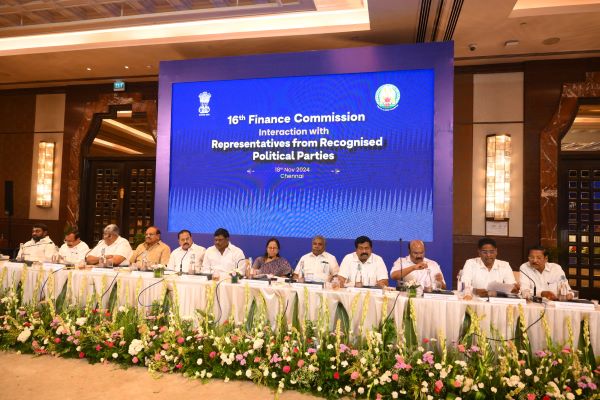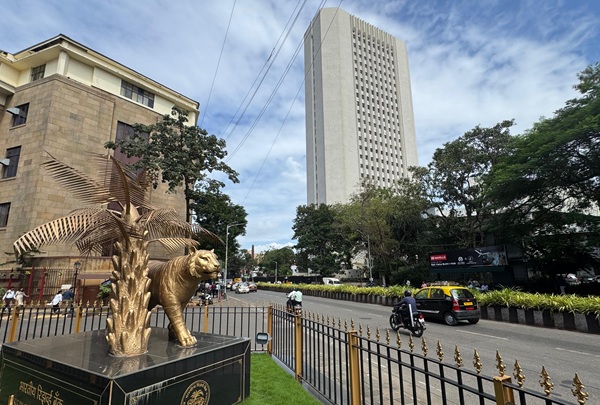.png)

Dr. Srinath Sridharan is a Corporate Advisor & Independent Director on Corporate Boards. He is the author of ‘Family and Dhanda’.
September 10, 2025 at 7:07 AM IST
The suggestion that the United States might tax Indian information technology services has been dismissed in many circles as far-fetched or even heretical. Yet the fact that serious legislative proposals are now being floated in Washington means that India and its companies cannot afford to treat the idea as an abstraction.
For a country whose technology exports exceed one hundred billion dollars and whose firms are deeply embedded in American supply chains, the possibility of unilateral taxation across the outsourcing value chain is a threat that must be addressed with sobriety rather than surprise.
The political mood in the United States has shifted in recent years. Tariffs on goods have been raised, protectionist rhetoric has grown sharper, and bipartisan anxiety over jobs moving offshore has deepened. Against this backdrop, it is not implausible that lawmakers will seek to extend the logic of tariffs to services delivered from abroad.
A Senate bill tabled earlier this year proposed an additional levy on payments made to foreign service providers when the benefits accrue to American consumers. The numbers mentioned are steep, and while the fate of the bill remains uncertain, its very introduction signals a change in the discourse. What was once unthinkable is now a matter of public debate in the U.S. Congress.
That political turn carries immediate economic consequences. India’s software and services exports are measured in the tens of billions of dollars and sustain millions of jobs across metropolitan and regional centres. A punitive levy on outsourcing payments at the scales now discussed in Washington would compress margins, prompt urgent contract renegotiations, and shift incentives for American buyers.
The immediate arithmetic is simple. A 25% levy imposed at source or passed through to clients would alter project economics and create pressure for reallocation. The effects would be uneven. Large, diversified firms with US subsidiaries and a mix of product and services lines may weather the shock. Mid-sized firms and niche exporters that rely heavily on steady US contracts would be exposed first and worst.
The legal and institutional battlefield will be complex and slow. A unilateral US tax that targets foreign service providers raises questions under WTO disciplines and under the emerging architecture of international tax cooperation. Multilateral forums, including the OECD processes that wrestled with digital taxation, offer pathways for clarification and recourse. They also operate on a multi year clock. That means legal remedies would be pursued in parallel with immediate commercial adjustments. India can and should prepare litigation strategies, but litigation alone will not protect contracts from being altered in real time.
Protectionist instincts in the United States are no longer limited to tariffs on goods. The boundary between goods and services in global trade is blurring, and politicians are aware that technology outsourcing has become the emblematic symbol of offshoring. For them, targeting Indian IT offers a narrative of defending domestic jobs. Whether such a narrative is sound economics is beside the point. What matters is that it resonates with voters, and that alone makes it politically potent.
The strategic question is whether India should treat this threat as an aberration or as a credible eventuality. The prudent answer is the latter. The forces driving such proposals are political rather than economic. Policymakers in Washington may know that Indian technology services make American firms more competitive, but in the heat of political campaigns, that nuance risks being lost. It is precisely at such moments that quiet, persistent diplomacy becomes critical.
Practical policy responses are therefore mandatory and urgent. New Delhi must open a sustained diplomatic channel with USTR and with key congressional offices to make a business case that Indian technology services are not a simple cost arbitrage but a source of competitiveness for US firms and consumers.
India should assemble robust impact studies that quantify downstream employment, innovation spillovers, and welfare effects inside the United States. Parallel to diplomacy, India must ready legal filings that document discrimination and that preserve the option of coordinated action with other affected partners.
Corporate strategy must mirror that duality of engagement and preparedness. Boards and executive teams should require scenario modelling now rather than later. Stress tests must show the bottom line impact of a twenty five percent outsourcing levy, of smaller excises, and of combinations with elevated tariffs.
Contracts must be rewritten to anticipate change in law events and to provide clear tax pass through mechanisms where possible. Commercial teams should begin measured conversations with major US clients about risk allocation and about steps that protect mutual interests. Many clients will be receptive to cooperative solutions once they understand that abrupt de sourcing destroys value for both parties.
Where possible, firms should accelerate the onshoring of sensitive delivery and client interfacing functions. A larger controlled presence inside the United States will blunt political and tax arguments that rest on the notion of foreign benefit. It will not be costless, but it buys political insurance and can be presented to US stakeholders as a net investment in local employment. At the same time companies must speed up production, IP creation and higher margin offerings that are less susceptible to transactional levies.
If such a bill were to advance in Washington, the consequences for Indian technology firms would extend well beyond contract margins. The sector directly employs over five million people and sustains many more through ancillary industries in real estate, transport, catering, and local services that cluster around technology hubs.
A sharp contraction in outsourcing revenues would first show up in hiring freezes, reduced bench strength, and slower wage growth in metropolitan centers such as Bengaluru, Hyderabad, Chennai and Pune. The ripple effects would then move outward, constraining consumption in regional economies and dampening the ecosystem of suppliers and start-ups that depend on steady flows of service exports.
The financial markets would not be immune. Indian technology companies carry significant weight in benchmark indices and are closely tracked by global investors. A sudden blow to earnings expectations would transmit into capital markets, denting valuations and investor sentiment, and thereby feeding the spillover from an American tax proposal into India’s domestic economy. What begins as a levy debated in Washington would thus ripple into jobs, consumption, and the wealth effect at home.
Industry association action will matter more than ever. Trade bodies must commission independent economic impact assessments, lodge formal representations, and maintain a continuous presence in Washington. They should also coordinate with other countries whose firms will be targeted. A coalition of affected states increases the credibility of multilateral legal action and raises the diplomatic cost of unilateral measures for the authoring country. Public messaging must be calibrated. The aim is to shift debate away from simplistic frames about outsourcing and toward a recognition of mutually reinforcing economic ties.
It would be reckless to pretend that passage of punitive legislation is inevitable. The US legislative process is noisy and unpredictable. Court challenges could slow or overturn aggressive measures. The domestic politics that produced recent tariff moves are themselves contestable and have already produced litigation.
The most persistent charge against the industry is that it has remained tethered to the outsourcing model, harvesting cost advantages rather than building differentiated strengths. Decades after its rise, the sector still draws most of its revenues from managing back-end processes and delivering code at scale for foreign clients. This dependence on arbitrage leaves it vulnerable to shifts in foreign tax policy and political mood, because it has not fully escaped the perception of being a utility rather than an innovator.
Another criticism is the industry’s reluctance to invest meaningfully in research and development. Compared with global peers that dedicate large shares of revenue to building intellectual property, Indian technology firms have spent sparingly on R&D. The result is that patents are rare, global platforms are few, and the intellectual heft of the sector has lagged behind its financial heft. This creates the paradox of an industry that is large in scale but light in original invention.
The sector is also faulted for the way it develops its workforce. India produces vast pools of engineers every year, yet the dominant model in technology services has been one of mass hiring and rapid training for repetitive delivery. Specialists in deep technology areas such as advanced AI, cybersecurity, or chip design remain in short supply. The outcome is a wide workforce that is agile in execution but shallow in expertise, a weakness that becomes sharper as global competition shifts toward skills that cannot be commoditised.
A further analyst commentary is that the industry has been slow to adapt to automation and artificial intelligence, even as it markets digital transformation to clients. The hesitation is not technical but commercial. Firms have feared that embedding AI and automation deeply into their own delivery models would shrink billing hours and cannibalise short-term revenue. That caution has left them vulnerable to a perception of being followers rather than leaders in the very technologies that will define the next decade.
Does the sector even need an external tax to feel pain?
For years it has weakened its own foundations by clinging to cost-arbitrage, instead of pushing the boundaries of innovation. The epithet of “cyber coolies” may sound severe, yet it endures because the industry has too often chosen volume over value.
The choice before India’s technology sector is not whether to hope or to fear. It is how to prepare. To prepare as if the worst were possible is the only way to ensure that the worst does not come to pass.




